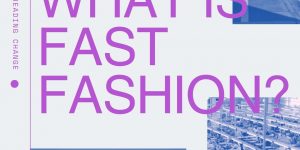What is Fast Fashion?
Fast fashion refers to the rapid production of trendy clothing at low prices, designed for brief use before disposal. This business model, fueled by constant consumer demand, results in massive environmental harm and exploitative labor practices.
Why Should We Care?
Fast fashion perpetuates global inequalities, particularly affecting the Global South. While it offers affordability in the Global North, it exploits marginalized communities, drains resources, and accelerates climate change. Awareness is key to advocating for ethical fashion systems.
The Fast Fashion Business Model:
Key features include:
- Quick trend replication
- Reduced production costs
- High inventory turnover
- Lower prices to attract consumers
Yet, this profitability comes at the expense of sustainability and workers' rights.
Injustice and Intersectionality:
The fast fashion industry exemplifies systemic injustice, disproportionately impacting:
- Women in exploitative labor roles
- Marginalized racial and ethnic groups in developing nations
- Low-income communities caught in cycles of overconsumption.
Addressing these issues requires a commitment to intersectionality, understanding how identities intersect to compound discrimination.
Taking Action:
- Advocate for policies that enforce corporate transparency and sustainability (e.g., France’s proposed anti-fast fashion bill).
- Embrace slow fashion by mending, recycling, or swapping clothes.
- Challenge consumerist culture by rejecting "haul" trends and prioritizing long-term wardrobe investments.
UBC+CCEL+Project_Fast+Fashion+Zine+(1)-compressed

Reviewed and synthesized academic literature on the garment retail industry, providing valuable data to enhance students' understanding of the industry, its challenges, and best practices.
Assisted in the design of visual materials including infographics and charts for the project to summarize the research findings, resulting in higher levels of audience engagement.
Prepared and conducted learning lessons at secondary schools in BC, improving youth awareness and engagement in justice-related issues.
Effectively managed a team of 5 student volunteers, fostering a positive and collaborative work environment by providing resources, support, and clear communication.